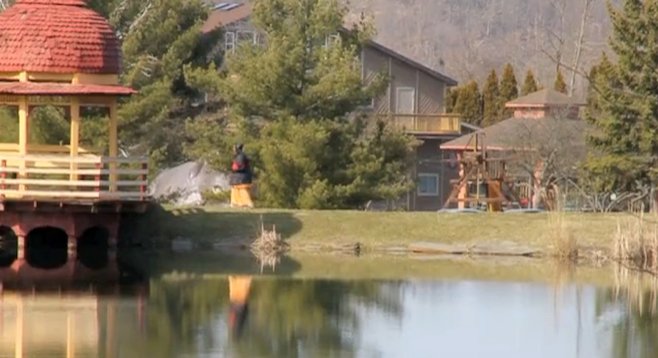 Facebook
Facebook
 X
X
 Instagram
Instagram
 TikTok
TikTok
 Youtube
Youtube

You might not expect a Hare Krishna temple in the hills of West Virginia, but the New Vrindaban community has been an active spiritual retreat since 1968.
I recently took a road trip with my friend Jen Resnick to this peculiar intentional community. Known for its beautiful vistas and "cow sanctuary," Vrindaban is also famous for its "Palace of Gold" – a slice of India in a region known for agriculture and heavy industry.
The people of the Panhandle are often skeptical about the International Society for Krishna Consciousness. At best, the local Hare Krishnas are perceived as weird and entrepreneurial, having purchased a massive chunk of wooded real estate. At worst, people view them as cultists. Indeed, the place can be unnerving: There are frequent power outages, weak cell-phone reception, and devotees talk about their yoga discipline with wild enthusiasm.
But Jen and I felt very comfortable in the odd little cultural island – we were treated to a buffet of vegetarian dishes, and we ate with our hands alongside the devotees. They came from all over the world, and they chatted openly about their experience at New Vrindaban.
We freely explored the Palace of Gold, a breathtaking domicile that was built, astonishingly, by an army of unskilled volunteers. Not once were we asked for money or favors.
We even attended a devotional ceremony, which featured our guide and several priests clanging cymbals and chanting "Hare Krishna" as lamps were lit and water was blessed. I don't expect to ever really open my eyes to Krishna Consciousness, but I was happy to attend.
And it's strange to drive into a rugged town like Wheeling, its skyline filled with smokestacks and rusty billboards, when you've spent an afternoon with the swamis.


You might not expect a Hare Krishna temple in the hills of West Virginia, but the New Vrindaban community has been an active spiritual retreat since 1968.
I recently took a road trip with my friend Jen Resnick to this peculiar intentional community. Known for its beautiful vistas and "cow sanctuary," Vrindaban is also famous for its "Palace of Gold" – a slice of India in a region known for agriculture and heavy industry.
The people of the Panhandle are often skeptical about the International Society for Krishna Consciousness. At best, the local Hare Krishnas are perceived as weird and entrepreneurial, having purchased a massive chunk of wooded real estate. At worst, people view them as cultists. Indeed, the place can be unnerving: There are frequent power outages, weak cell-phone reception, and devotees talk about their yoga discipline with wild enthusiasm.
But Jen and I felt very comfortable in the odd little cultural island – we were treated to a buffet of vegetarian dishes, and we ate with our hands alongside the devotees. They came from all over the world, and they chatted openly about their experience at New Vrindaban.
We freely explored the Palace of Gold, a breathtaking domicile that was built, astonishingly, by an army of unskilled volunteers. Not once were we asked for money or favors.
We even attended a devotional ceremony, which featured our guide and several priests clanging cymbals and chanting "Hare Krishna" as lamps were lit and water was blessed. I don't expect to ever really open my eyes to Krishna Consciousness, but I was happy to attend.
And it's strange to drive into a rugged town like Wheeling, its skyline filled with smokestacks and rusty billboards, when you've spent an afternoon with the swamis.
Comments